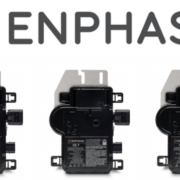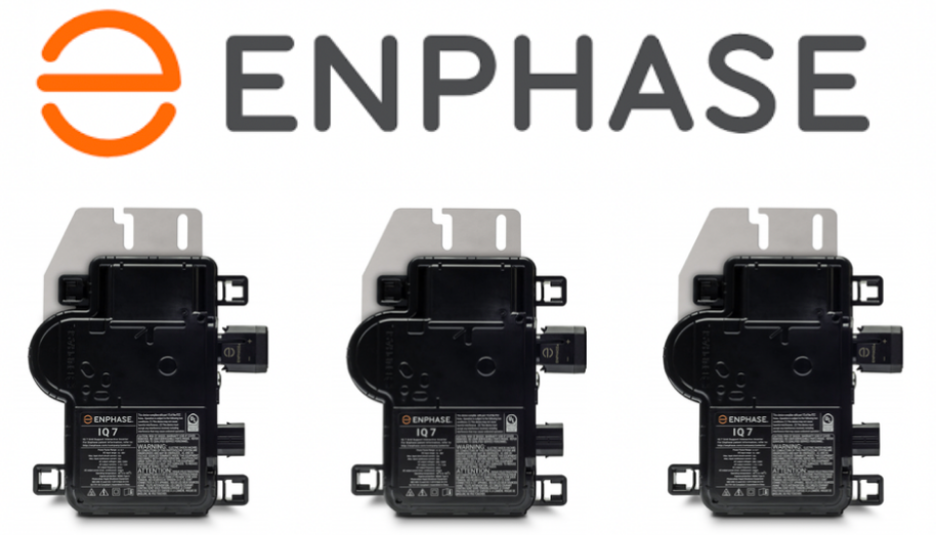Despite the global pandemic destroying large swaths of the U.S. economy, the solar sector has been a revelation and is one of the few industries that benefits from global warming.
Enphase Energy (ENPH) founded in 2006 has long been regarded as the world leading microinverter manufacturer.
What is a Micro Inverter?
A micro inverter is a very small inverter designed to be attached to each individual solar panel.
Based in the US, Enphase launched the first micro inverter, the M175 in 2008 but it wasn’t until the next-gen M190 was launched in 2009 that sales really took off.
Enphase has since established itself as an industry leader in micro inverter technology and has a huge market share in North America.
Under normal seasonality, the solar industry typically strengthens each quarter with the first quarter being the weakest boding well for the end of 2021.
The company reported revenue of $316.1 million, shipped approximately 2.36 million microinverters and 43-megawatt hours of Enphase storage systems, achieved non-GAAP gross margin of 40.8%.
The demand for microinverter systems continues to be well ahead of supply.
In Q2, Enphase experienced component constraints on the supplier AC Fed drivers, which resulted in microinverter shipment volume slightly lower as compared to Q1.
For the third quarter, Enphase continue to expect to remain constrained on microinverters, but the supply situation is better than what it was in the second quarter.
One of Enphase's critical competitive advantages is that the company operates more as a technology company than a commodity manufacturer.
While other companies do produce its main power inverter product, Enphase has market dominance in the micro-inverter segment.
For residential solar applications, micro-inverters do offer an advantageous alternative. Enphase's shipment growth over the past couple of years is the empirical evidence.
Even more salient, the company avoids ruinous capital expenditures by deploying contract manufacturing similar to peers with proprietary technology.
By leveraging these variables, Enphase has accelerated its high gross margins above 30% and now up to 40% in Q2 2021.
The company's lower margins last year were in part due to higher expedited shipping costs to satisfy demand but has solved that bottleneck and boosted gross margins.
Enphase's stable high gross margin is the x-factor.
Most solar module producers have high fixed costs which deteriorate margins and drag down utilization rates.
As a result, not only do shipments gyrate between industry cycles but also gross margin. While Enphase is also exposed to industry fiscal cliffs, high gross margins should be highly constructive even in down years.
During up cycles, Enphase's high gross margins and lower operating structure give it abnormally advantageous earnings leverage.
Enphase's earnings leverage will be even more dramatic once revenue growth reaccelerates after the pandemic filters through the U.S. economy.
Up until now, Enphase has been pigeonholed as an inverter company within the solar industry.
The company did offer a battery storage option, but it was not an overwhelming segment of total revenues.
This may change moving forward after the company's next-generation Encharge storage option released lately has shown glimpses of stardom among its competition.
Democrats hellbent on adopting clean energy might unearth an opportunity for sweeping change for US solar companies such as Enphase.
It’s already trending in that direction as a mega growth industry like technology.
Also, the Democrats are trying to crowbar in any climate-related infrastructure spending with adjacent bills.
If annual residential solar installations double with a slightly higher per home average, about one million homes would be converted to solar annually.
With over 139 million homes in the US, only a small fraction would be converted to produce solar electricity over the next decade or two, even if the US residential solar market doubled.
The main takeaway is that the solar market in the US still has huge upside under the Democrats and U.S. President Joe Biden.
Enphase has a current micro-inverter capacity of 10 million units annually and based on its per-unit assumption of 325 watts, can supply 3.25 GW annually.
Should the US solar market double due to beneficial policies, Enphase's potential market share will rise above 34%.
Ultimately, Enphase's high margins and fixed cost structure should not be underestimated especially under a systemic industry shift led by the US economy laser-focused on green infrastructure.
The secret recipe of high gross margin and low-cost structure make Enphase incredibly leveraged to top-line growth.
Lately, a new storage revenue stream and continued shipment growth in a rapidly expanding solar market should result in overperforming earnings growth.
New storage products will meaningfully add to earnings next year without diluting gross margin.
I first recommend this stock when it was trading at $120 in November 2020 and readers who bought into this story made a killing with the stock already at $189 today.
Enphase said its sales in the coming quarter should range from $335 million to $355 million, up about 1.5% from Q3 2020, and slightly above analyst expectations.
Gross profit margin, however, will move into reverse, continuing to fall below 40%, and perhaps as low as 37% therefore I would wait for a substantial correction before getting back into this one.





